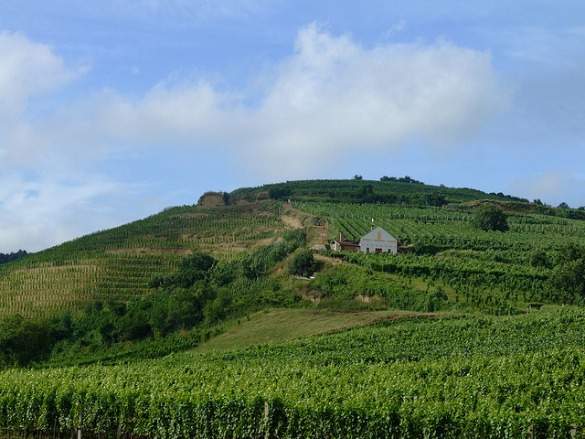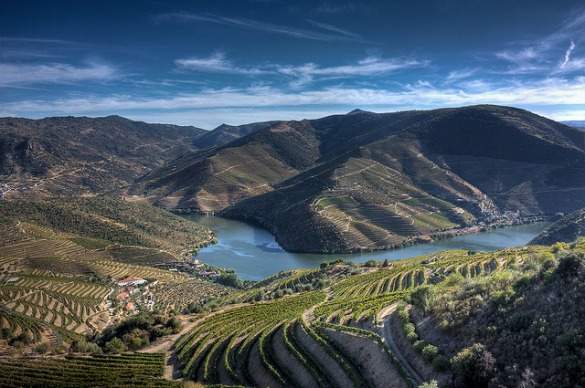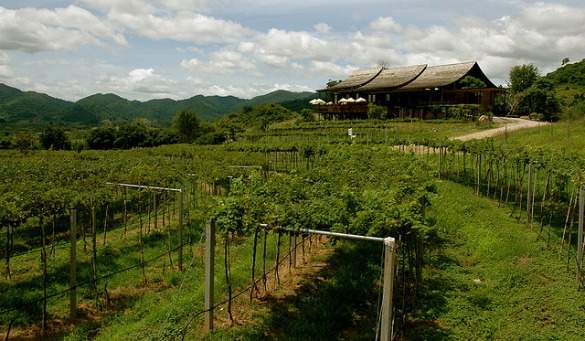Been dreaming of a wine-themed holiday, but dreading the expenses associated with regions like Napa Valley? Why not search further afield for your wine adventures? A wine getaway, as long as you’re willing to plan ahead and turn your nose toward the less well-known wine regions of the world, can be surprisingly cheap. The regions offer lower prices, fewer crowds, and surprisingly excellent and unique wines. Here are a few suggestions for the budget-minded traveler and wine enthusiast.
Morocco
Starting with the Phoenicians and the Romans in antiquity, Moroccan wine production reached its peak under French colonialism in the first half of the 20th century. After independence in 1956 and the re-instatement of the Alaouite Dynasty, wine cultivation was “tabled” in favor of cereal or edible fruits, and what remained was, frankly, not very drinkable.
However, since the 1990’s there has been a resurgence of the winemaker’s art, centered mainly in the ancient imperial capital cities of Meknes and Fes, with formidable results. Considered by many to have the best climate in North Africa for viniculture, Moroccan wine production is 75% red, and the producers favor blends over specific grapes, similar to the French style. Prices for good wines range from $7 and up, with the best value found around $15-20.
Today, the winemakers have begun to bring home important awards from Europe, and wine tourism is just beginning to blossom. Hotel prices vary throughout the country, from a few dollars in a pension to hundreds for restored palaces, though for twenty dollars a night, you can expect to stay in style everywhere but Casablanca.
Tours in the Moroccan wine regions can be arranged through the large white grands taxis which can be found in every big city. They seat up to six people but don’t leave until full, unless you rent the whole car- expect to bargain hard. Alternately, many of the newer craft wineries can arrange a van for a customized tour.
>> Find hostels in Morocco
>> Search for cheap airfare to Morocco
Hungary
Although overshadowed by its Czech neighbors in malt-matters, Hungary leads the Eastern European region in wine, both in quantity and quality. The country is best known, perhaps, for the Tokaji region, which specializes in sweet wines. The grapes are often harvested as late as December, many having developed the condition of “noble rot,” which serves to concentrate the fruit’s sweetness.
Elsewhere, many other varietals are grown, generally Hungarian grapes, and skewing towards whites, although several reds, such as the Egri Bikavér (Bull’s Blood of Eger), are known globally. Of interest is the Kékfrankos grape, which is becoming quite popular in the country.
For travelers, the best place to start would be Budapest, which is fast emerging as a wine tasting mecca of sorts, and is the center of all the transportation networks. Both buses and trains offer youth discounts, as well as competitive rates compared to Western Europe.
Private rooms in Budapest start at less than fifteen dollars a person, and hostel beds can be had for half of that, making it accessible for all budgets. Make sure you sample a glass at one of Budapest’s famous Ruinpubs, which are multi-story bars built into abandoned Soviet-Era apartment complexes. A glass at a bar will around $2-$3, while quite decent bottles can be had from $5-$6.
>>Find hostels in Budapest
>> Search for cheap airfare to Budapest
Turkey
Turks have a phrase for ultra cheap wine: köpek öldüren, which translates as “Dog-Killing Wine,” so do yourself a favor here and don’t buy the cheapest bottle you can find. That said, travelers will find Turkey to be as climatically blessed as other Mediterranean wine powerhouses, producing quite world-class bottles. Ephemerally, the country also contains at least two different claimants of “World’s Oldest Wine Region”, and the fabled vineyards of Noah, which lends the grapes a venerable aura, to say the least.
Produced mainly on the Western coast, especially near Izmir, Turkish wine is quite evenly divided between European and Turkish grapes, most produced by the state-run vineyards, the first of which was establish by Mustafa Kemal Ataturk. In addition, the last 20 years have seen the establishment of many boutique wineries, many of whom have been quite well received internationally.
For sampling Turkish wines, expect to pay from $8-15 for a decent bottle, while a glass should be around $5-7 at a bar. For a room in Istanbul or other big cities, you might pay from $12- $30 per person, with half that outside the city. To get close to the action, you might choose to travel to Izmir, which is known for its student-packed streets and liberal attitudes. Travel within the country’s extensive bus network is quite cheap: $5 for every 100km, while smaller towns and attractions are served by the Dolmuş (shared mini-bus) network.
>> Find hostels in Istanbul
>> Search for cheap airfare to Istanbul
>> Read about 10 experiences not to miss in Turkey
Portugal
Like their Iberian cousins, the Portuguese have long had an affinity for wine, although thankfully, they don’t seem to be as fond as mixing it with Fanta. Instead, Portuguese wines run the gamut from traditional wines to the delightfully off-kilter vinho verde, and the justifiably famous Port.
Vinho Verde, or “Green Wine,” is produced in the rustic north of the country. The area is home to many small growers, and often produced for private consumption. The wine is produced without any aging, relying on the natural flavors of the local grapes. The fermentation process gives it a small amount of carbonation, which allows the subtle and light flavors to burst on the palate.
Elsewhere, both reds and whites are grown, in just about every district. Wine is considered to be a necessity for a good meal, and thus it is quite easy to find both table and vintage wines, the latter commanding rabid followers and high prices, especially in the case of the fortified Port.
For travelers, Portugal is cheaper than the rest of Western Europe, although in major cities, you can still expect to pay around 20 Euro per person for a decent room. A good home base is Porto in the north, close to the nearby Douro valley. Transport can be arranged there through some of the many private tour companies, which offer 3-4 different vineyard tastings, meals, and even relaxing river cruises (check out www.cellartours.com) . Alternately, one might rent a car for a more personalized experience. Figure on about $30-40, plus gas.
>> Find Lisbon hotels
>> Search for cheap airfare to Portugal
>> Check out our Portugal Travel Guide
New York
Although oftentimes overlooked in favor of Californian dominance, New York has been producing high quality and low cost wines since 1788, and is the third largest production area in the US. It is also home to the oldest vineyard in the United States, and happens to be absolutely stunning during the harvest season.
Due to increasing sophistication with grafting old world grapes to new world roots, New York wines run almost the full spectrum from sparkling whites to deep reds. Central New York, especially the Finger Lakes region, is famous for its whites, and excels at German varietals, especially Gewurztraminer and Riesling. The region also produces quality Ice and Sparkling wines. In contrast, the Hudson Valley, just north of New York City, produces full-bodied Reds, focusing on French grapes. As a general tip, 2005 was an incredible year throughout the state, making those bottles the best option.
Although not exactly budget, wine country in New York tends to be far cheaper than California or big American cities, and wine tours are quite affordable. Your best bet is to visit during the harvest times, as especially in the Hudson valley, visitors are invited to help pick grapes and enjoy the products. Boutique B&Bs start around $70 a night, while good bottles of wine go from 8$ and up.
The vineyards tend to band together onto specific wine trails, all of which offer maps for individuals with their own vehicles. Alternately, New York wine country is quite well served by private tours, ranging from party buses to more serious tours for true oenophiles. Good bets are the Cayuga trail near Ithaca and the Shawangunk Trail near New Paltz, about an hour north of NYC. Both trails are quite packed with hotels and bed and breakfasts.
>> Find hotels in New York City
>> Check out our New York Travel Guide
Georgia
Because of wine’s long history in Georgia, the traditions of the country’s viticulture have become entwined with its national identity. It’s rare when traveling Georgia’s wine regions not to be invited into homes for endless glasses of home-made pinkish white wine, which is made by fermenting the grape on the grape skin – a process used only for red wine in the west.
Traditional Georgian grape varieties are little known in the West, but there are over 400 to choose from, nearly 40 of which are officially grown for commercial viticulture. Many commercially marketed Georgia wines can taste sweet to a western palette, but rely on the Superavi grape for a crisp and plumy experience.
Georgia is a budget traveler’s paradise. Homestays (which includes breakfast, dinner and usually endless wine) within Georgia’s principle wine region, Kakheti, cost around $20USD. You can hire a car and driver to tour the region for $60 a day (which can be split by up to five people), and your average bottle of wine will cost about $5 USD. The best base for touring Georgia’s wine region is the gorgeous, peaceful town of Signagi, reachable via mashrutka from Tbilisi for about $5.
Cyprus
Cyprus is another ancient wine country. It has been vine-growing and wine-producing for millennia. Internationally, it is best known for Commandaria wine, an amber-colored sweet dessert wine that dates back to 800 BC. Commandaria has the distinction of being the world’s oldest named wine still in production, with the ‘Commandaria’ name dating back to the crusades in the 12th century.
Most of the wine is produced from indigenous local grape varieties such as Mavro (black), Opthalmo (red), Maratheftiko (red) and Xynisteri (white), though international varieties such as Cabernet Sauvignon and Chardonnay have also been planted.
The Paphos region and the Lemesos (Limassol) region are the two largest wine growing areas in Cyprus. Their respective capitals, Paphos and Limassol, are good bases for exploration of the area. In both private double rooms can be found for under $30.
Cyprus is small and getting around, as long as you aren’t crossing the border to the North, is simple and easy. Spurting around on a 100CC scooter costs less than $10 a day and is the best way to enjoy the island’s mild climate and scenery. Your average bottle of wine will cost around $6, and a decent meal in a midrange restaurant runs about $15. A good resource to help plan your Cyprus wine tour is Cyprus Travel Secrets.
>> Find hostels in Limassol
>> Search for cheap airfare to Cyprus
>> Read our guide to Cyprus
Thailand
Traditionally, Thai wines haven’t caused much fuss among wine enthusiasts. But over the past few years Thai winemakers have been borrowing technologies from France and Australia that have catapulted them to a new prominence in the market, making one the most popular budget destinations in the world also a nice destination for a wine holiday.
With 90-degree heat, 90% humidity, incredibly high precipitation and flat, low altitude topology, growing wine grapes in Thailand has to be done a bit differently than pretty much everywhere else. One advantage, however, is the ability to harvest two crops of grapes per year.
There are three regions in Thailand that produce wine: Northern Thailand, Khao Yai, and the Chao Phraya delta, and tours can be easily arranged from Bangkok, which can serve as your base. You can hire your own taxi, which will cost about $45 a day, or you can arrange a tour through an agency, which costs around $50 per person and can be arranged through websites such as www.winetourthailand.com. Expect to pay between $5 to $9 for your average bottle. A double room in Bangkok runs about $15 and most meals will cost around $5; up to $15 in some of the nicer establishments.
>> Find accommodation in Bangkok
>> Search for airfare to Thailand
>> Check out our Thailand Travel Guide
To learn more about wine-tasting regions in the world and plan your trip, check out:
- Six Places in Europe You Never Thought to Go Wine Tasting
- Wine Tasting in South America: Where to Go and What to Try
- California Wine Country: Planning a Cheap Trip Yourself
Photos by: ryangs, access.denied, Video Vik, Warl0rdPT, visit~fingerlakes, onbangladesh, Shelley & Dave, sherrattsam







